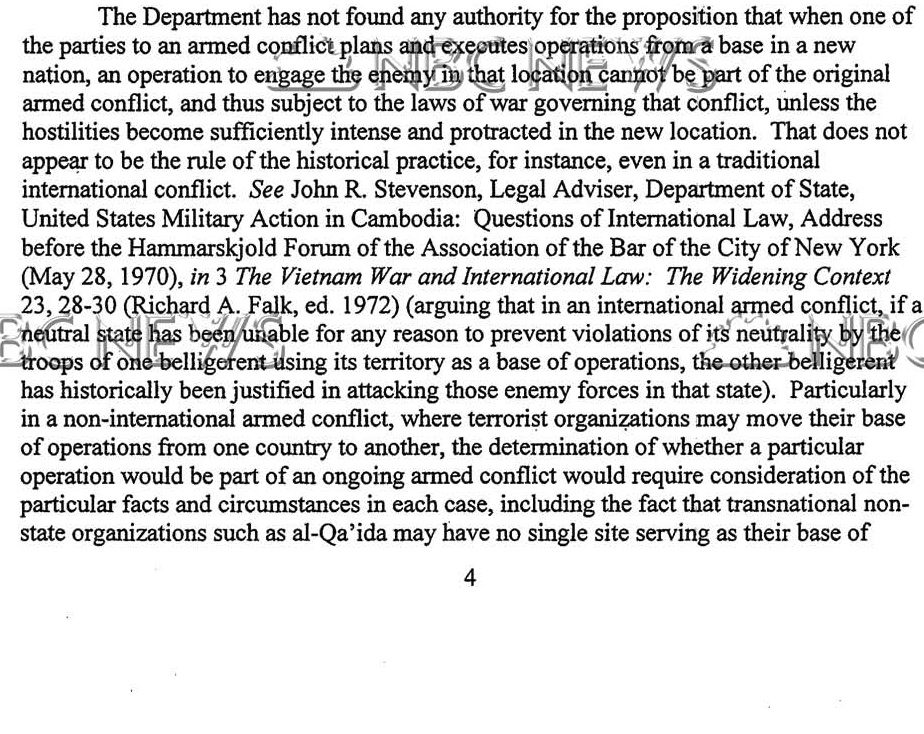Kudos to my colleague Geoff Corn for the citation to his article, co-authored with Eric Jensen, about the Law of War in the DOJ “White Paper” on “Lawfulness of a Lethal Operation Directed Against a U.S. Citizen who is a Senior Operational Leader of Al Qa’ida or An Associated Force.”
H/T Greg McNeal
Update: Geoff sends in a link to another paper he wrote that is on point, title “Geography of Armed Conflict: Why It is a Mistake to Fish for the Red Herring.”
Identifying a framework for assessing the permissible geography of armed conflict must be driven by both strategic and legal considerations. Armed conflict by its very nature manifests the exercise of national power implicating the most fundamental aspect of sovereignty: the right and obligation of the state to protect itself from internal or external threat. Categories of armed conflict and their associated legal regimes evolved in response to this reality, which almost always involved inter-state hostilities or internal hostilities between states and insurgent or dissident forces. It is debatable, however, whether contemporary threats fit neatly into these two armed conflict categories, or whether the law regulating armed conflict was, from inception, under-inclusive in the sense that it failed to account for situations of armed hostilities falling outside these categories. History indicates that armed conflict has never been statically confined to the two “types” that became the dominant focus of conflict regulation following World War II.
This under-inclusiveness is manifested today by the concept of transnational armed conflict (TAC) — armed conflict of international scope between a state and a non-state opponent. This theory of armed conflict remains controversial, although it has gained substantial traction. It has also, however, generated assertions that if such a theory of armed conflict is a reality, it must be geographically restricted to only those areas qualifying as “hot zones” of conflict (however that concept is defined). Ultimately, however, seeking to identify and impose a geographic limitation detached from the threat dynamics triggering the use of combat power is a false solution to the concerns of operational over-breadth associated with TAC. Such limitation is a futile endeavor, for the developing axiomatic reason that once a state commits to the use of force as a remedy against such a transnational non-state threat — like all other conflicts in history — the dynamics of the threat itself will be the predominant consideration in defining the scope of operations.
Seeking to identify some legally mandated geographic boundary for armed conflict of any type is, however, a genuine Red Herring. Armed conflict is a threat-driven concept, arising when the threat necessitates resort to combat power, and extending to wherever the operational and tactical opportunity to produce a militarily valuable effect on the enemy arises. Accordingly, this essay argues that it is illogical to attempt to impose a “hot zone” limitation on the scope of TAC, and that such an effort will inevitably be viewed as inconsistent with the strategic imperatives that drives states to engage in armed conflict. Even more problematic, however, is how this approach to limiting the potential over-breadth of authority triggered by LOAC invocation to combat a transnational non-state threat distracts from other potentially viable methods to produce this effect. Thus, critics of this broad exercise of state power might be better served by abandoning the search for this geographic scope Red Herring and focusing on more pragmatic mitigation efforts.

